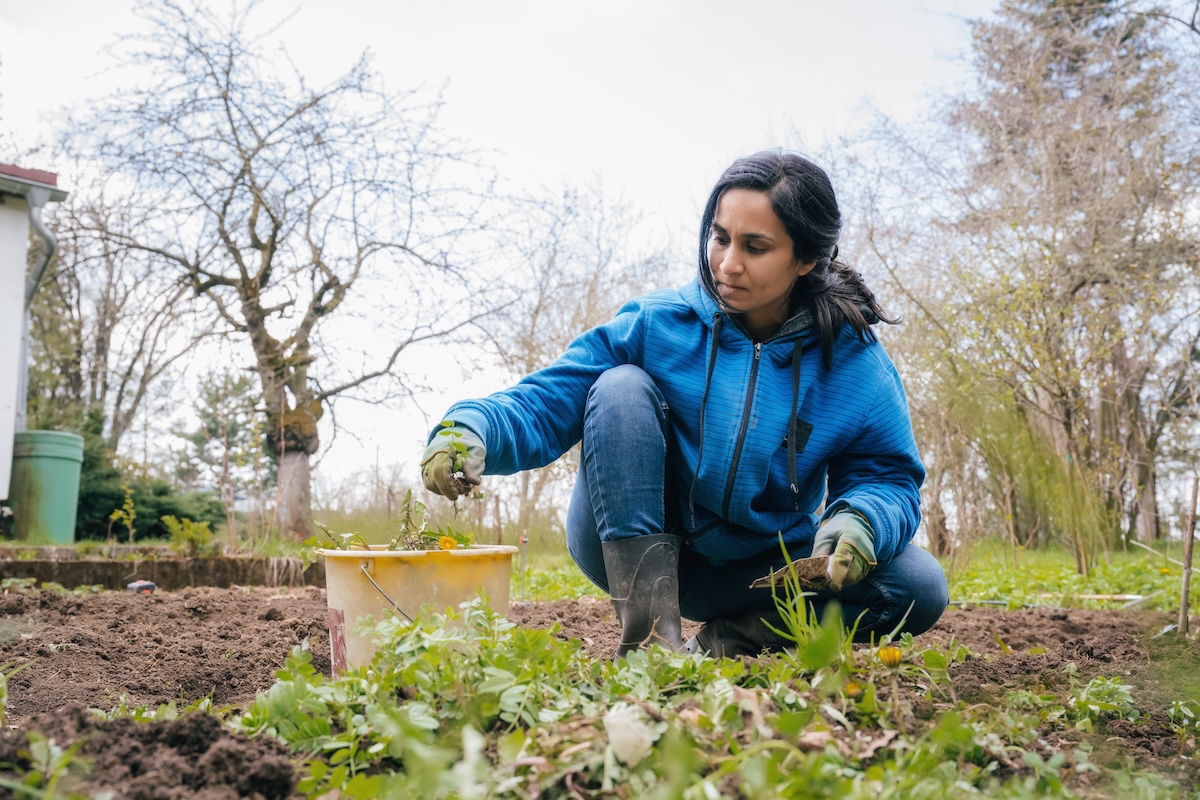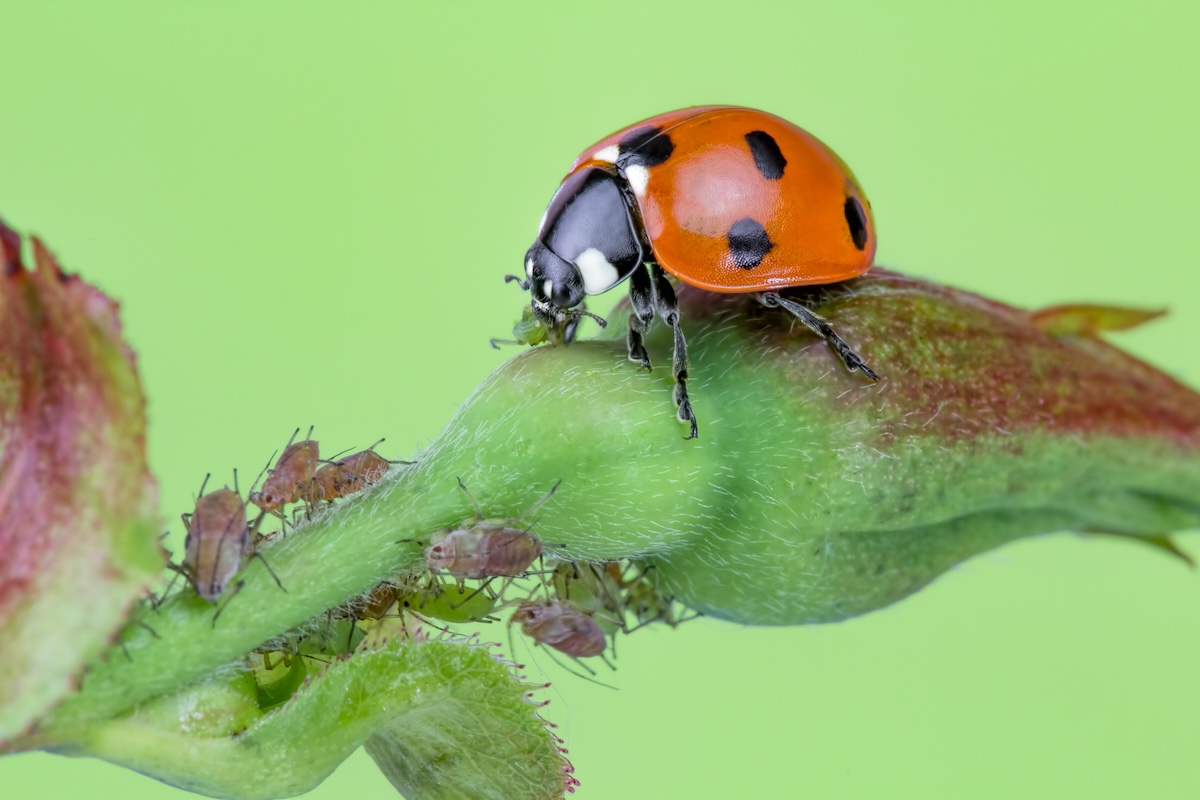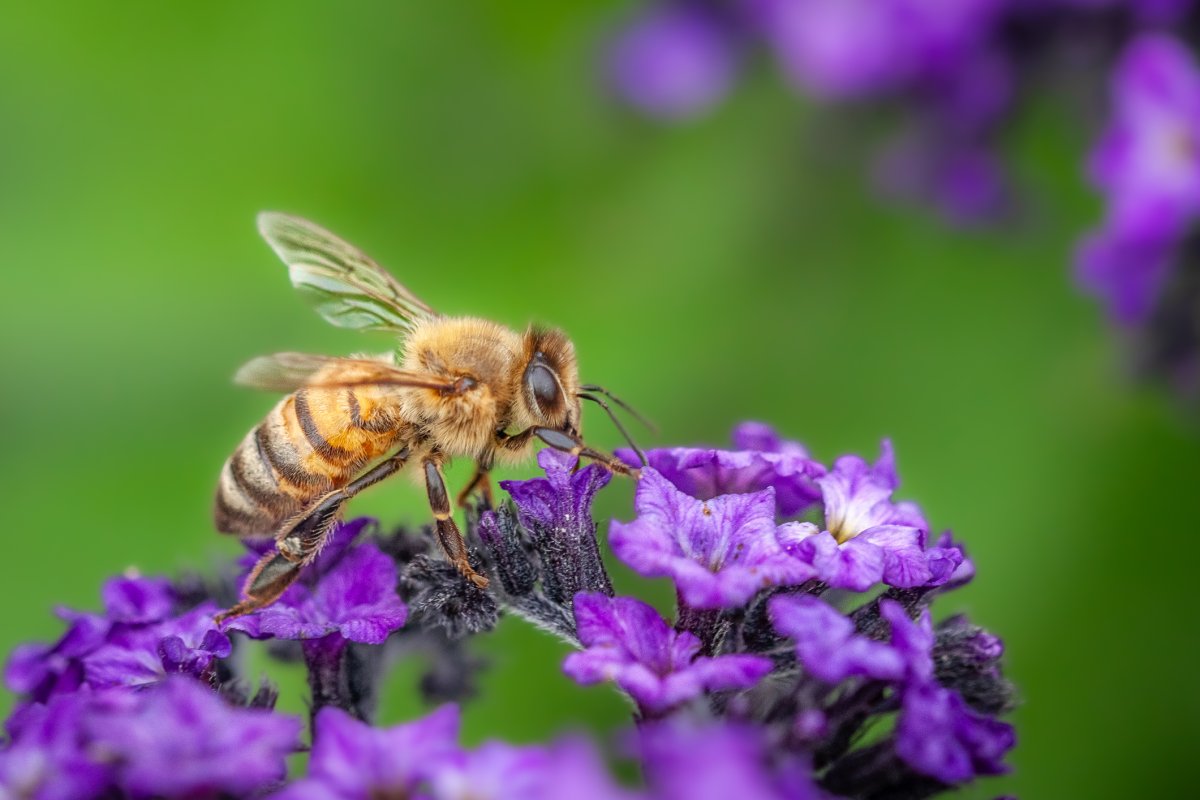We may earn revenue from the products available on this page and participate in affiliate programs. Learn More ›
Bees play a critical role in the world, so it’s troubling to see populations of wild native bees declining. Bees pollinate thousands of plants, including 130 different types of fruits, vegetables, and nuts; produce honey; and support biodiversity. Unfortunately, nine types of bee species are already on the endangered list in the United States, with at least five additional species being considered for inclusion. A lack of bees would be disastrous for ecosystems and agriculture globally.
What is causing the decline? According to new research, pesticide use is primarily to blame. Scientists found a strong correlation between pesticide use and declining sightings of wild bees, with pesticides causing sighted numbers in some species to drop as much as 56 percent. To help solve this problem, researchers are calling for more people to choose Integrated Pest Management (IPM) strategies instead of pesticides. Learn more about how IPM works and how you can implement it in your home garden to help protect native bee populations.

What Is Integrated Pest Management?
Developed in the 1950s to address increasing environmental issues brought about by the overuse of chemical controls like pesticides and insecticides, IPM continues to be touted by the Environmental Protection Agency (EPA) as an “effective and environmentally sensitive approach to pest management that relies on a combination of common-sense practices.” Although IPM arose from practices in agricultural systems, its concepts translate easily to home gardens as well.
The main goal of IPM is to manage pests within tolerable limits below the level at which a pesticide is necessary—not to eliminate pests completely. This is accomplished by implementing cultural, biological, and physical controls through a four-step process. Throughout this approach, scientists analyze information on the life cycles of pests and their interaction with the environment to manage pests long-term without harming people, property, and the natural environment, like native bees and other pollinators.
Integrated Pest Management Involves 4 Main Steps.
IPM is a series of pest management evaluations, decisions, and controls, according to the EPA. For home gardeners, an IPM approach starts with selecting the right plants for the right region and environment and with good plant care. To address a pest problem, follow this four-step process:
1. Set Thresholds
Before taking any action, set a threshold for determining when to use a specific pest control method. For example, seeing one pest doesn’t mean it’s time to take action. Evaluate the size, scope, and intensity of the pest problem so you can address it successfully and safely.
2. Monitor and Identify Pests
IPM recognizes that not all pests require control. In fact, some pests are even beneficial. By properly identifying pests and monitoring their activity, you can make effective control decisions. In particular, this step helps ensure that home gardeners avoid pesticides (and damage to beneficial insects) as much as possible.

3. Prevention
IPM focuses on preventing pests, which involves removing conditions that attract them in the first place. In a home garden, such tactics include reducing clutter, removing trash, and sealing areas where pests can enter. Installing physical barriers, getting rid of overgrown vegetation, and removing standing water can help outdoors as well. Other growing methods like crop rotation and the timing of planting can lower pest risk.
4. Control
If the previous steps indicate that pest control is indeed necessary, then IPM calls for trying the least risky pest controls first. Options include pest trapping, heat and cold treatment, or physical removal. Targeted pesticide spraying is the absolute last resort if the other approaches are not working. This differentiates IPM from organic farming or gardening, which limits the use of synthetic chemicals altogether.
Implement Integrated Pest Management at home to do your part for native bees.
For IPM to be as effective as possible in your garden at controlling bad bugs while doing no harm to bees and other beneficial insects, keep the following tips in mind:
- Select the right plants. From the start, make sure that the plants you choose for your garden are suitable for the local environment and planting location. Consider factors such as how tall and wide vegetables are expected to grow, available soil moisture and irrigation methods, soil pH level, and light conditions the plants need to flourish. If plants don’t get what they need, they can end up being more susceptible to pest problems. Selecting native ornamental plants for flower beds, trees, and shrubs helps as well, since native plants support native bees.
- Maintain healthy plants. For IPM to work, gardeners should properly maintain conditions with effective cultural controls to help stop pests from wreaking havoc on plants. Proper maintenance entails testing the soil and treating it with amendments and aeration, watering and fertilizing correctly, applying mulch, cleaning tools regularly, and making sure plant materials brought into the garden are free of pests and diseases.
- Rotate crops. It’s important to rotate the crops planted every season in a vegetable garden to prevent the buildup of pests since some crops will be non-host plants and will deprive pests of their food source. Intercropping, for example, increases garden diversity and encourages beneficial insects.
- Employ sanitation. The process of removing plant material that can harbor pests is called sanitation. This involves getting rid of weeds and mulch, destroying vegetable plant residues, and picking up fallen fruit to help reduce pest populations. Properly pruning trees and shrubs can also help make the garden less attractive to pests.
- Bring in more natural enemies. IPM promotes using natural predators to help get rid of pests, also referred to as biological control. Encourage natural enemies by diversifying your landscape to include a variety of flowering plants and installing birdhouses to attract more birds. Research the best predators for the pests you see in your garden. Ladybugs, for example, prey on whiteflies, aphids, spider mites, and thrips.

- Try physical removal. As a physical control option, traps work well for home gardens. They can be baited with pheromones to attract pests or unbaited with yellow sticky cards to attract and capture a variety of pests. In addition, hand-picking pests like tomato hornworms and dropping them in a jar of soapy water can help break the pest cycle with no need for chemicals.
- Build barriers. Mechanical and physical controls that directly reduce pests are also part of IPM. They essentially create zones to keep certain pests out by using physical barriers. Examples include installing screens, netting, fencing, plant collars, or floating row covers to protect plants from insects.
For more specific information on native bees and protecting their populations by practicing IPM in your garden, contact your state Extension Service


